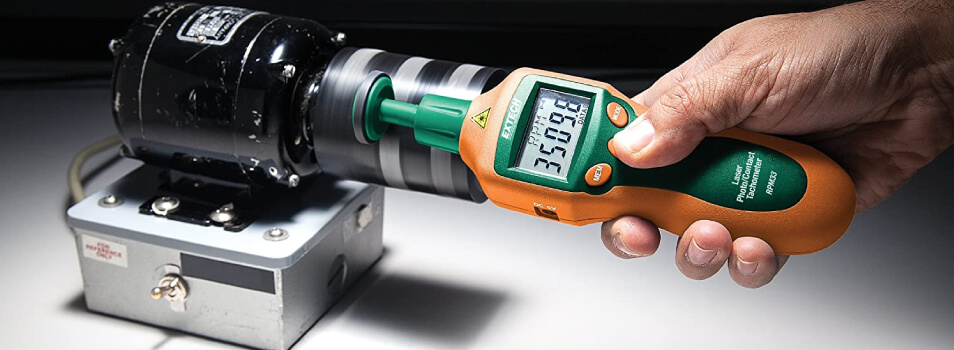
How to Properly Bench Test a Tachometer: Key Insights
Share
For tech professionals and enthusiasts alike, understanding how to properly bench test a tachometer is essential. This process not only ensures that the instrument functions correctly but also helps with diagnosis and troubleshooting. A tachometer is a device used to measure the rotation speed of a shaft or disk, displaying the information in revolutions per minute (RPM). Proper testing methods are critical for achieving accurate readings in automotive, industrial, and other applications.
This article delves into the specifics of how to bench test a tachometer, illustrating essential steps, the tools required, and key considerations that tech enthusiasts should keep in mind. Whether you are testing a mechanical or electronic tachometer, having a good grasp of the testing methodology will significantly enhance your proficiency.

Understanding the Basics of Tachometers
Before diving into bench testing, it is vital to understand what a tachometer is and how it operates. Tachometers can be categorized into two main types: mechanical and electronic. Mechanical tachometers typically use a flexible cable connected to the engine, whereas electronic tachometers utilize sensors and electronic circuits to measure speed.
For a deeper understanding about tachometer readings, consider checking out this article on normal tachometer readings.
Essentials for Bench Testing
To bench test a tachometer, several tools and equipment are essential. Heres a breakdown of what youll need:
- Multimeter: This is crucial for measuring voltage and current output from the tachometer.
- Signal Generator: A device capable of generating a frequency signal represents engine RPM.
- Power Supply: A regulated DC power source for powering the tachometer during testing.
- Test Leads: Necessary for connection to the tachometer and other devices.
- Clamp Meter: Useful for measuring current flow to diagnose any electrical issues.
Step-by-Step Guide on How to Bench Test a Tachometer
The following steps outline how to bench test a tachometer effectively:
- Step 1: Prepare Your Setup - Ensure your testing area is clean and free from distractions. Assemble your tools and equipment.
- Step 2: Connect the Tachometer - Wire the tachometer to the power supply. Ensure to observe the correct polarity when connecting the leads.
- Step 3: Use the Signal Generator - Connect your signal generator to the tachometer input. Set it to the desired frequency to simulate different RPM scenarios.
- Step 4: Measure Output - Using the multimeter, measure the output voltage of the tachometer while varying the RPM settings via the signal generator.
- Step 5: Note Readings - Record the voltage readings at various RPMs and compare them against expected values.
Troubleshooting Common Issues
During your testing, you might encounter a few issues. Here are some common problems and their solutions:
- Inconsistent Readings: If the readings fluctuate significantly, check your connections to ensure they're secure and that the signal generator's settings are consistent.
- No Output Signal: Verify that the tachometer is receiving power. If theres still no output, the tachometer may be defective.
- Incorrect Voltage Output: Cross-reference the readings with a known good tachometer to confirm accuracy. Adjust your signal generators frequency as necessary.
Safety Precautions When Testing
Safety should always come first during electrical testing. Remember the following precautions:
- Avoid wearing loose clothing that might get caught in machinery.
- Ensure your workspace is dry to prevent electric shock.
- Utilize gloves when working with electrical connectors to avoid injury.
Additional Resources on Tachometer Functionality
For further insights on how tachometers work, consider checking resources like Britannica on Tachometers or this guide on digital and mechanical tachometers for additional reading.
Understanding Tachometer Designs
Different tachometer designs have various implications for how they are tested. For example, older mechanical tachometers might require different handling compared to modern digital versions. Understanding these differences ensures accurate bench testing.
While modern tachometers provide greater functionality and flexibility, testing strategies remain relatively consistent across types. If you're interested in the engineering behind tachometers, visit ScienceDirect on Tachometers.
Frequently Asked Questions (FAQ)
1. What equipment do I need for bench testing a tachometer?
You will need a multimeter, signal generator, power supply, test leads, and clamp meters for effective testing.
2. How do I identify a faulty tachometer?
Irregular or inconsistent readings are usually indicative of a faulty tachometer. Cross-referencing with a functioning tachometer can help confirm any discrepancies.
3. Can I bench test a mechanical tachometer?
Yes, bench testing a mechanical tachometer is possible, though the methods may differ slightly from electronic versions.

Conclusion
This article provides an insightful overview of how to bench test a tachometer. By following the steps outlined and using the appropriate tools, tech professionals and enthusiasts can effectively diagnose and ensure their tachometers are functioning accurately. Remember that understanding what you are testing and the principles behind it can substantially improve your results, leading to a more engaging and productive experience.
For more advanced topics, delve into the sensors in tachometers and other articles on relevant aspects of tachometers and their purposes.
